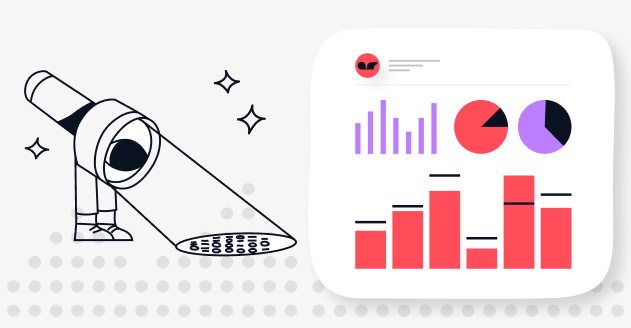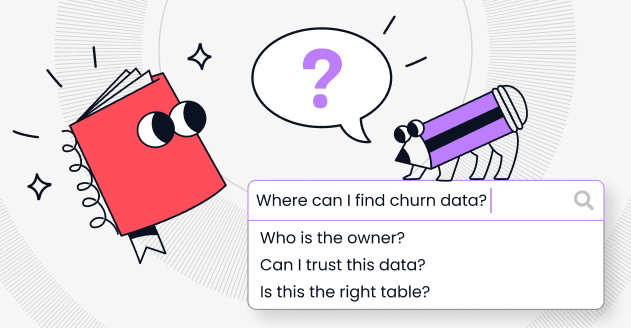What is Data Anonymization
Everything you need to know!

Data Anonymization
At its core, data anonymization serves as a safeguard for sensitive data. Picture it as digital armor, standing guard over private data.
It operates by either erasing or shuffling identifiable bits of personal information. These are the tell-tale signs that can connect stored data to a specific individual. The objective here is to preserve privacy while harnessing the potential of critical data.
.png)
Anonymized data
Envision data that has journeyed through the anonymization process. It comes out the other side devoid of any personal identifiers, thereby maintaining anonymity. In a nutshell, anonymized data is the model citizen of the data world, abiding by privacy regulations.
Anonymized data finds its worth in research settings where privacy holds the highest priority. Be it medical research, societal studies, or market analysis, anonymized data shines through.
A report by Markets and Markets shares some intriguing numbers. It says the global data anonymization market was worth USD 695 million in 2018.
Forecasts predict this market to skyrocket to a whopping USD 2,376 million by the close of 2023, showcasing its immense potential. It's a testament to how crucial data anonymization has become in our data-hungry world today.
Types of Data Anonymization Techniques
Let's take a closer look at the techniques employed to anonymize data. Remember, not all data requires the same approach. The choice of technique can vary depending on the nature and purpose of the data in question.
Data Masking
In this process, the original sensitive data retreats into the shadows as tweaks or complete swaps alter certain characters.
This technique comes in handy, especially when dealing with delicate numerical information. Think credit card information or Social Security numbers.
A Markets and Markets report throws light on the growing relevance of this technique. They forecast the data masking market to balloon to a whopping $767 million by 2022. That's a testament to the rising demand and adoption of data masking in our digital world.
Data Pseudonymization
Data pseudonymization operates in a realm where real identifiers take a backseat. As pseudonyms, or you could say, fictitious labels, replace them.
The beauty of this method is in its security. It makes it impossible to identify an individual unless you have a separate stash of additional information.
The European Union's General Data Protection Regulation (GDPR) also gives pseudonymization a thumbs-up. According to GDPR, it's a pretty effective technique for achieving a design that safeguards data by default.
Data Swapping
Data swapping, or data shuffling, involves interchanging the data values between records. This method maintains the overall distribution of data while disrupting the relationship between individual data points, thereby preserving anonymity.
Synthetic Data
Synthetic data presents a fresh take on data anonymization. Instead of tweaking the original dataset, this approach creates an entirely new dataset. This new data statistically mirrors the original but doesn't hold any real identities.
Health research is catching onto this innovative method. According to a study by NCBI, synthetic data is becoming a popular choice among health researchers.
Data Perturbation
Data perturbation involves adding random noise to data or altering data values slightly. It disrupts the precision of data while preserving its overall statistical properties.
Data Generalization
Broadly speaking, generalization serves as a handy tool in the world of data anonymization. In this approach, we trade precise values or attributes for wider categories. Let's say we're talking about age, Instead of pinpointing a person's exact age, we'd use an age bracket instead.
This approach has its roots in ensuring k-anonymity, a model designed to safeguard individual identities within a dataset. The principle here is simple. An individual's data should blend into the data of at least 'k-1' of other individuals.
As highlighted in a piece by Satori Cyber, generalization is an effective method of achieving this k-anonymity. By smoothing out the fine details, we're able to keep the essence of the data intact. It helps in preserving the privacy of the individuals involved, while still allowing data insights to be extracted.
The Key Benefits of Data Anonymization
Harnessing Data-Driven Insights Safely
Data anonymization allows organizations to safely glean insights from their treasure troves of data without violating privacy. Think about healthcare researchers extracting crucial data points without breaching patient privacy or personal data, as detailed in an NCBI study.
Adhering to Data Protection Regulations
Businesses today have to navigate myriad data protection laws like Europe's GDPR. Data anonymization plays a vital role here, helping them adhere to these regulations and avoid penalties or damage to their reputation. The ICO's guide on data anonymization highlights its use in achieving GDPR compliance.
Building Trust with Customers
In an era where data breaches of sensitive information are increasingly common, data anonymization builds trust.
When customers see their data has undergone effective anonymization, they develop stronger trust and loyalty. This reduces the risk of churn.
A Cisco survey found that companies prioritizing privacy and transparency tend to outperform their competitors. This is evidence of the direct impact of data anonymization on trust-building.
Data Anonymization Tools
Today, there are tools aplenty to help you anonymize data effectively. Here's a curated list of some of the best tools that are making waves in the data anonymization scene.
ARX
ARX is a rockstar in the world of open-source data anonymization tools. It can handle a wide range of privacy criteria, making it a flexible choice for businesses of all sizes.
Clover DX
Clover DX's data anonymization tool works magic on your crucial production-level data, transforming it into an anonymized dataset.
Using its anonymization capabilities, Clover DX thoroughly cleanses your production data, removing sensitive parts. Impressively, it manages to preserve the necessary information, thus maintaining the value of your data.
Docbyte
Docbyte stands out as an impressive tool in the data anonymization space. Their website notes that its design aims to assist organizations in handling sensitive data more responsibly.
With a user-friendly interface, Docbyte makes it easy to anonymize documents and data sets, ensuring privacy and compliance. What's more, it's versatile, catering to a wide range of industries, from healthcare to finance. In short, Docbyte is a powerful ally in the pursuit of data privacy.
Data Synthesizer
People who are interested in Synthetic Data will appreciate Data Synthesizer. As the name suggests, it's all about creating synthetic datasets, providing an added layer of privacy.
Amnesia
Let's not forget Amnesia, a data anonymization tool developed by the OpenAIRE project. Amnesia stands out with its ability to handle both tabular data and complex hierarchies.
sdcMicro
Last but not least, there's sdcMicro, an R package developed by the International Household Survey Network. If you're already using R for your data analysis, sdcMicro could be a seamless addition to your toolbox.
Data Anonymization Use Cases
Healthcare: Anonymizing Medical Records
Think of countless medical records brimming with potential insights - but privacy stands in the way of them being used for valuable research.
Data anonymization helps mask these records, letting researchers pore over data while keeping patient privacy intact.
A report by the US National Library of Medicine sheds light on the burgeoning use of anonymization in health studies.
It's paving the way for researchers to explore medical data without worrying about breaching privacy norms. It has deepened understanding of health issues and ways to counter them. All thanks to the power of data anonymization.
Marketing: Refining Strategies while Respecting Privacy
Marketers thrive on the insights derived from consumer data. They use it to sharpen strategies and craft personalized experiences.
But misuse of data can spell privacy disasters. This is where anonymized data comes to the rescue. It lets marketers glean insights without trespassing on privacy lines.
This Forbes piece underscores how businesses are harnessing anonymized data to fine-tune marketing efforts without betraying consumer trust. The goal is to maintain a fine equilibrium between personalization and privacy.
To sum up, the significance of data anonymization in our contemporary data-centric era is monumental. It serves as an invaluable resource for preserving privacy while simultaneously unveiling the enormous potential concealed within our data.
Harness the Power of Data Responsibly with CastorDoc
Data anonymization is not just a trend; it's a necessity in today's data-driven world. Ensuring that data is both useful and private is a delicate balancing act. While tools like ARX, Docbyte, and Clover DX make data anonymization accessible, the true essence lies in understanding, documenting, and managing your data effectively.
At CastorDoc, we're champions of data transparency and privacy. Our data documentation tool is designed for the modern digital era – easy to use, yet comprehensive. Whether you're a part of the Notion, Figma, Slack generation or diving deep into Fivetran, Looker, Snowflake, or DBT, CastorDoc is your partner in creating a great data experience.
Want to see how we can enhance your data journey? Book a demo with CastorDoc and elevate your data management strategy.
Subscribe to the newsletter
You might also like
Get in Touch to Learn More



“[I like] The easy to use interface and the speed of finding the relevant assets that you're looking for in your database. I also really enjoy the score given to each table, [which] lets you prioritize the results of your queries by how often certain data is used.” - Michal P., Head of Data




.png)



